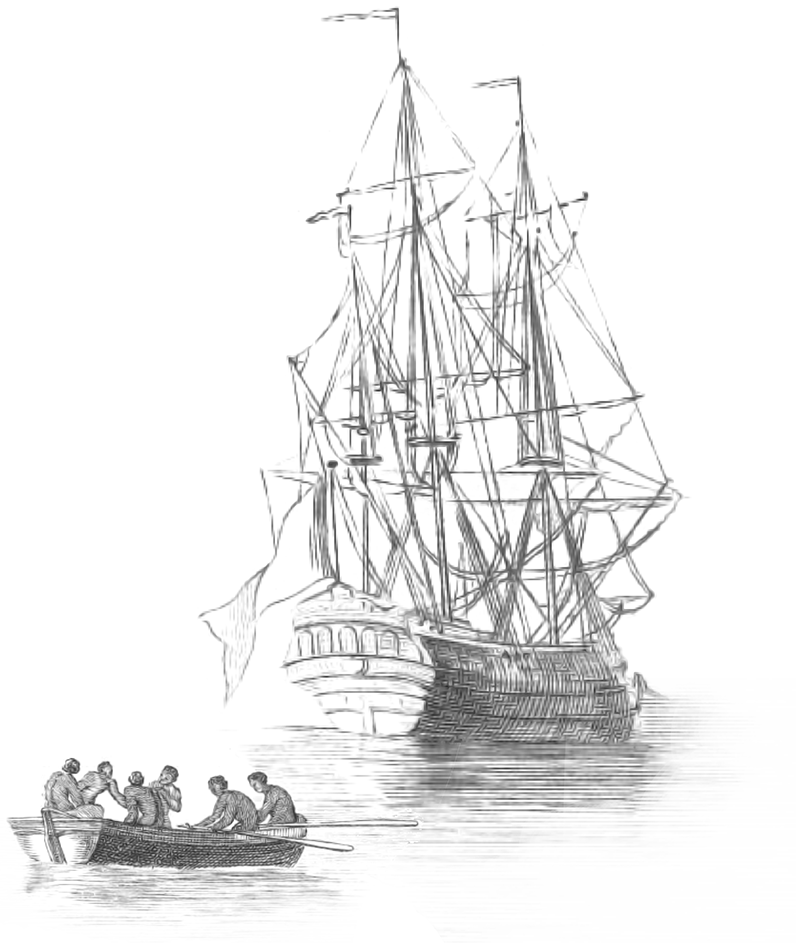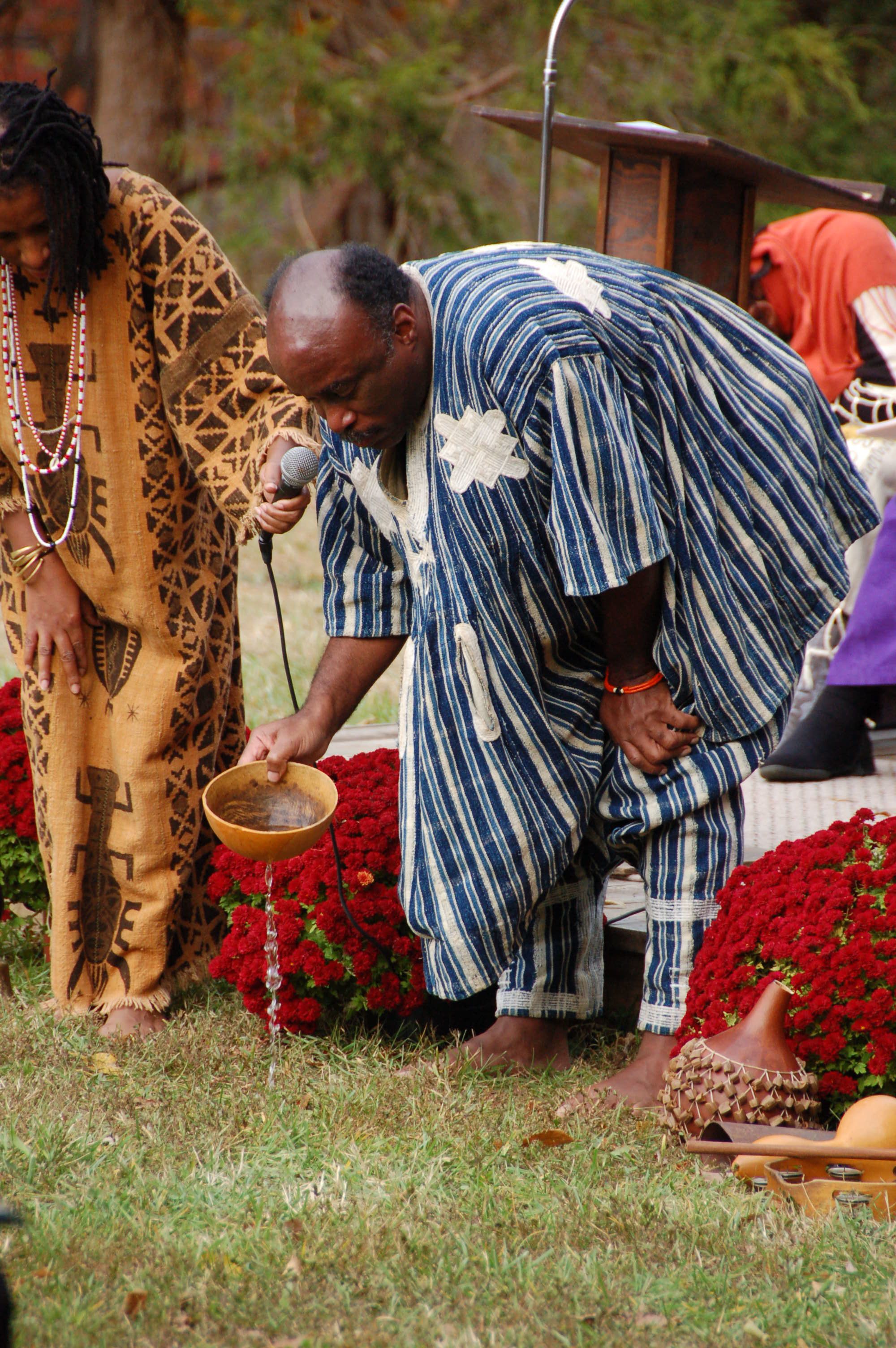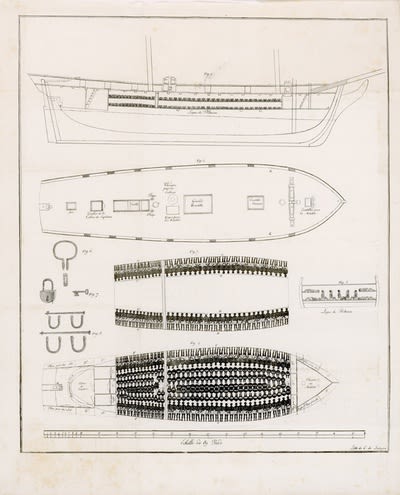Understanding the History of Slavery in the Americas
New consortium will ensure future of SlaveVoyages database

In 1720, on a ship ironically named the Generous Jenny, more than 200 people captured from Africa arrived at a port on the Patuxent River in Maryland. The survivors of the brutal voyage would spend the rest of their lives toiling in slavery.
Almost 300 years later, descendants of those enslaved people joined with other community members in a remembrance ceremony at the former plantation, now known as Historic Sotterley. Participants drummed, prayed and poured libations on the ground that had been the site of so much suffering, and children placed white carnations in the water to honor those who died during the Middle Passage.
The event, held in November 2012, was one of the first ancestral remembrance ceremonies sponsored by the Middle Passage Ceremonies and Port Markers Project — and it would not have been possible without SlaveVoyages.org, created by Emory University as a central repository of information about the dispersal of enslaved Africans across the Atlantic world.
The Middle Passage Ceremonies and Port Markers Project provides a way for communities to honor the millions who died or survived the transatlantic voyage. It has now helped organize 32 remembrance ceremonies at locations where enslaved people disembarked, and installed 29 historic markers, with more underway.
“Throughout all these efforts, the SlaveVoyages dataset has been our grounding for information and data,” says Ann Chinn, executive director of the project. “It’s a tangible connection to history. That has been one of the invaluable results of what the SlaveVoyages database provides for the public.
“People are using the information to remember, heal and expand the reconciliation process that is so critically needed today.”

Kofi Ofori, an Akan priest, pours the libation at the ancestral remembrance ceremony at Historic Sotterley, a Maryland plantation where Africans stolen from their homeland disembarked into a life of slavery. Photo by Kenneth R. Forde.
The 1720 voyage of the Generous Jenny is just one of the more than 48,000 transatlantic and intra-American slave trade journeys documented at SlaveVoyages.org.
A preeminent resource for the study of slavery, SlaveVoyages will now be operated by a newly formed consortium of institutions, ensuring the preservation, stability and future development of what has become the single most widely used online resource for anyone interested in slavery across the Atlantic world.

Kofi Ofori, an Akan priest, pours the libation at the ancestral remembrance ceremony at Historic Sotterley, a Maryland plantation where Africans stolen from their homeland disembarked into a life of slavery. Photo by Kenneth R. Forde.
Kofi Ofori, an Akan priest, pours the libation at the ancestral remembrance ceremony at Historic Sotterley, a Maryland plantation where Africans stolen from their homeland disembarked into a life of slavery. Photo by Kenneth R. Forde.

Historical images: The Brig “Vigilante” was a French slaver captured in 1822. The ship departed from France and carried 345 enslaved people from the coast of Africa, but was intercepted by anti-slave trade cruisers before sailing to the Americas and taken to Freetown, Sierra Leone. Learn more about the Viglante on SlaveVoyages.org.
Historical images: The Brig “Vigilante” was a French slaver captured in 1822. The ship departed from France and carried 345 enslaved people from the coast of Africa, but was intercepted by anti-slave trade cruisers before sailing to the Americas and taken to Freetown, Sierra Leone. Learn more about the Viglante on SlaveVoyages.org.
Shared responsibility
The new consortium, organized by Emory, will function as a cooperative academic collaboration through a contractual agreement between six institutions — Emory, the Hutchins Center for African and African American Research at Harvard University, the National Museum of African American History and Culture, the Omohundro Institute of Early American History & Culture at William & Mary, Rice University, and three campuses at the University of California that will assume a joint membership: UC Santa Cruz, UC Irvine and UC Berkeley.
“The launch of the SlaveVoyages.org consortium is an innovation not just for scholars of slavery, but for all soft money digital humanities projects,” says David Eltis, Emory’s Robert W. Woodruff Professor Emeritus of History and co-director of the SlaveVoyages project. “At long last, this consortium opens up a route to sustainability.”

Historical images: The Brig “Vigilante” was a French slaver captured in 1822. The ship departed from France and carried 345 enslaved people from the coast of Africa, but was intercepted by anti-slave trade cruisers before sailing to the Americas and taken to Freetown, Sierra Leone. Learn more about the Viglante on SlaveVoyages.org.
Long-term sustainability has become an important question for granting agencies considering support for research in the humanities, says Allen Tullos, co-director of Emory’s Center for Digital Scholarship, which has worked with Eltis and other scholars to host, enhance and expand SlaveVoyages, including a major relaunch in 2018. “This consortium is a new model for publishing and sustaining large-scale digital humanities research.”
Membership is for a three-year term and is renewable. Each member institution of the SlaveVoyages consortium will support the site through dues and be represented on the consortium’s steering committee, which decides which institutional member will host the site. The host institution will receive funding through membership dues to offset costs of maintaining the site, and will maintain performance metrics, develop environmental and technical standards for the site, and provide administrative support.
One of the special features of the SlaveVoyages.org website is a timelapse video that shows the movement of slave ships across the Atlantic, carrying millions of enslaved people captured from Africa. View the full interactive timelapse.
One of the special features of the SlaveVoyages.org website is a timelapse video that shows the movement of slave ships across the Atlantic, carrying millions of enslaved people captured from Africa. View the full interactive timelapse.
Making history accessible
SlaveVoyages.org has its origins in the 1960s, when historians began collecting data on slave ship voyages and estimating the number of enslaved Africans to cross the Atlantic from the 16th through 19th centuries.
But developing a single, multisource dataset was a pipe dream until the 1990s, when Eltis and other researchers began to collaborate on centralizing their findings. The data migrated from punch cards, to laptop computer, to a CD-ROM published in 1999, to a website that debuted at Emory in 2008.
“Twenty years and four million viewers after its first appearance as a CD-ROM, the future of 48,000 slaving ventures recorded in SlaveVoyages is finally secured for posterity," says Henry Louis Gates Jr., Alphonse Fletcher University Professor and director of Harvard’s Hutchins Center, a consortium member.
Gates has called SlaveVoyages.org “a gold mine” and “one of the most dramatically significant research projects in the history of African studies, African American studies and the history of world slavery itself.”
SlaveVoyages.org is the culmination of both independent and collaborative work by a multidisciplinary team of international scholars and historians, librarians, cartographers, computer programmers, designers and digital experts. Many who began their academic careers working on the project are now alumni of Emory’s Laney Graduate School, and have emerged as the next generation of slave trade scholars.
From 2015-2018, SlaveVoyages.org was completely re-coded and modernized, and continues to publish new research and resources, from lesson plans for young students to new features such as an interactive time lapse detailing the volume and destinations of voyages over the centuries. The site attracts more than 1,400 visitors a day, including educators, scholars, scientists, artists, genealogists and curators with national museums and history centers.

The SlaveVoyages.org website includes a painstakingly rendered 3-D look inside the slave vessel L'Aurore, reconstructed using actual blueprints of the ship. Watch the full video.
“SlaveVoyages has had a tremendous role in expanding opportunities for graduate students doing many different kinds of work,” says Tullos. “We’ve helped to create a generation of digital scholars.”
More than 50 researchers from Emory and institutions around the world have contributed to the project, which has received funding from the National Endowment for the Humanities, the Mellon Foundation, the Arts and Humanities Research Council of the UK, and Harvard’s Hutchins Center.
In August 2020, ECDS helped SlaveVoyages migrate its multiple databases to the Amazon Web Services Cloud platform, a more technologically sustainable model which includes improved responsiveness to traffic increases and a more robust connection between database and web server.
With the new consortium, SlaveVoyages will continue to serve as a model, inspiring other research and serving as a resource for new initiatives and broader public understanding of the history of slavery.
Media contact: Elaine Justice, 404-727-0643, elaine.justice@emory.edu

The SlaveVoyages.org website includes a painstakingly rendered 3-D look inside the slave vessel L'Aurore, reconstructed using actual blueprints of the ship. Watch the full video.
The SlaveVoyages.org website includes a painstakingly rendered 3-D look inside the slave vessel L'Aurore, reconstructed using actual blueprints of the ship. Watch the full video.
Learn more:
SlaveVoyages | Emory University | Emory News Center

